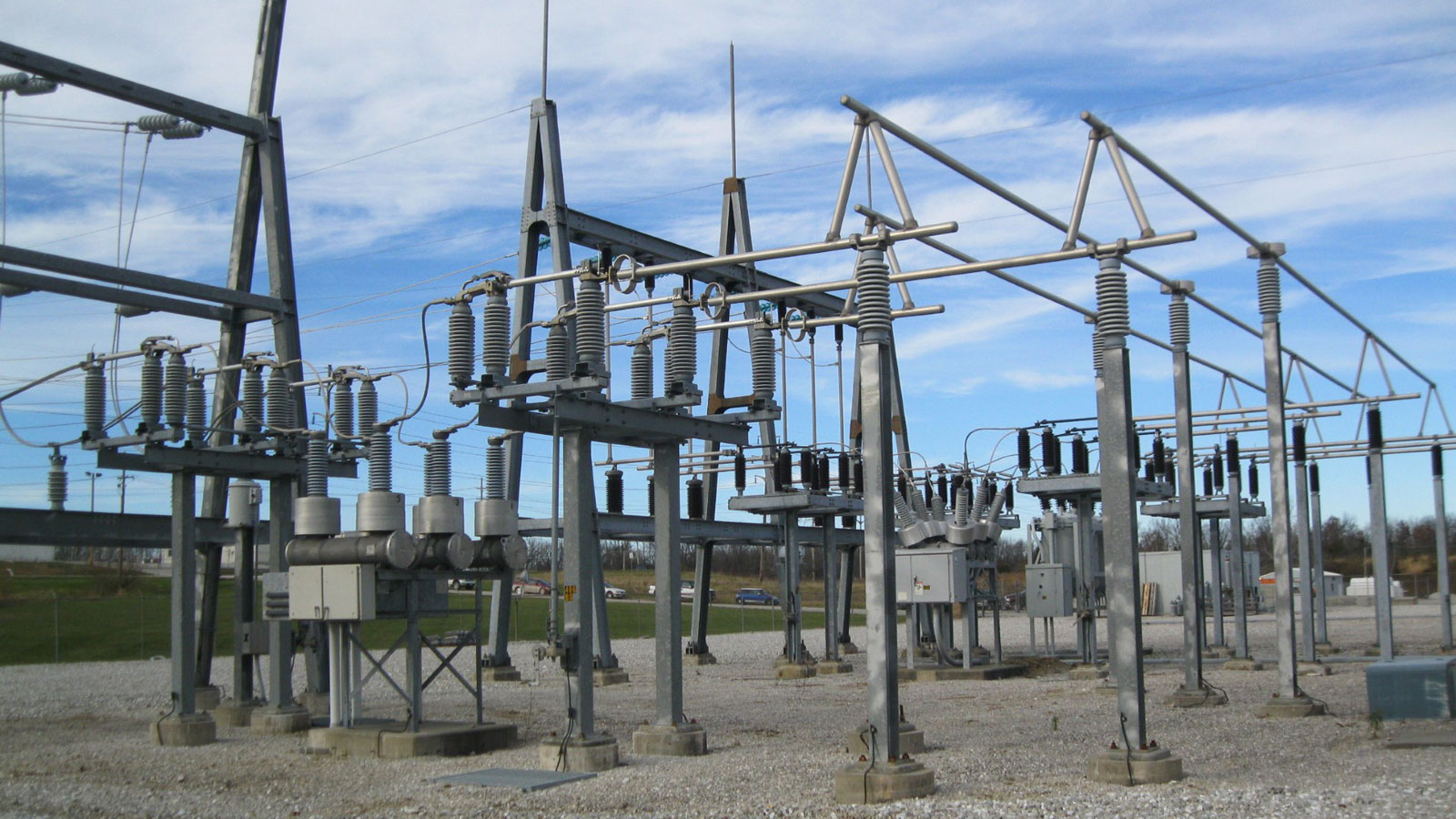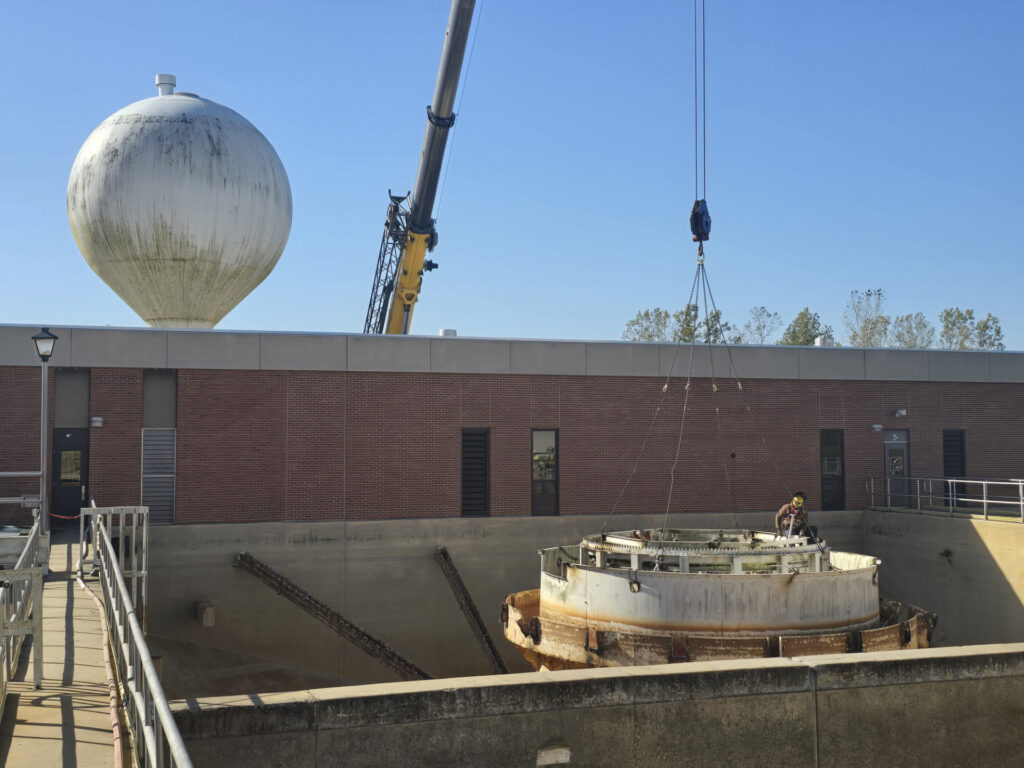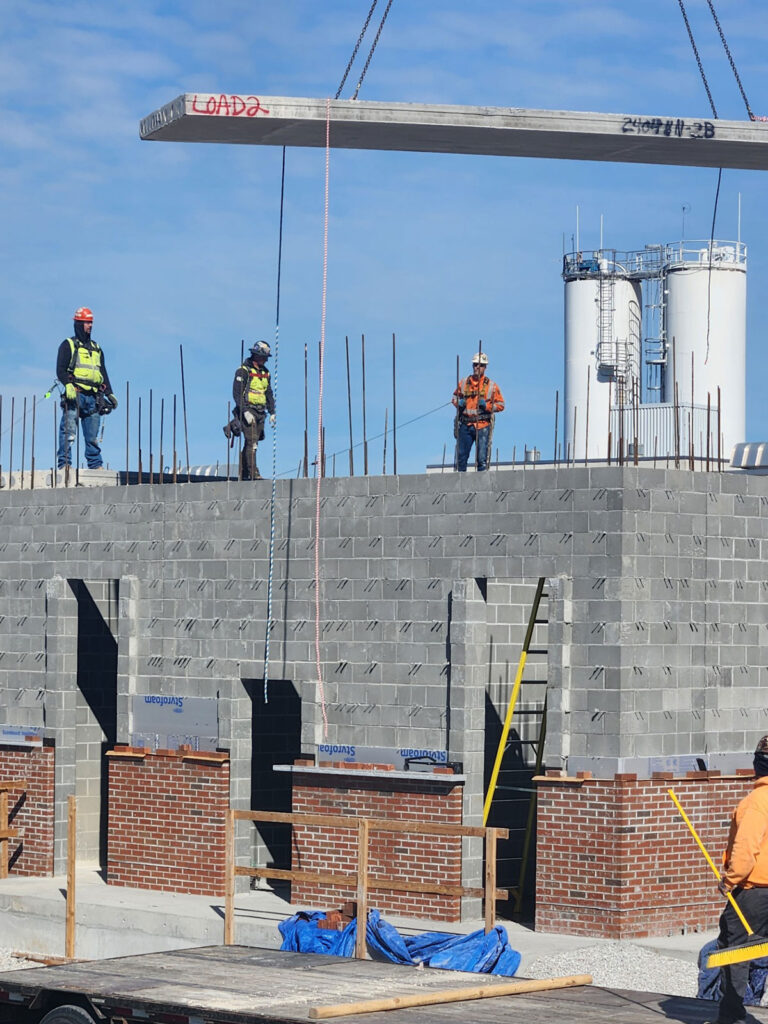Utility Confronts Futility
- "Utility Confronts Futility" originally appeared in the May 2025 "Downtown" issue of COMO Magazine.

Why does it take Columbia so long to get major utility projects done?
In the beginning, there were warnings by Columbia Water & Light staff that Columbia’s electric system’s capacity was being pushed toward its limits. That was in 2007, when Dan Dasho, then the utility’s director, advised the City Council that additional substations and transmission capacity were needed in the rapidly growing area of south Columbia.
“I was promoted from public works over to the electric division in September of 2006,” says David Sorrell , who retired as the city’s director of utilities in March 2025. “In the first couple of weeks I was there, we were building the transmission line up to Grindstone substation, coming from the south. They said the next phase of this is to go from Grindstone to Perche substation. So, it was more than eighteen years ago that I first heard of it.”
Between Dasho and Sorrell was Tad Johnson, who served as director from 2010 to 2020. And as Sorrell left the post in March after five years, he did so with a major system upgrade — supported overwhelmingly by voters’ approval of a bond issue in April 2015 — still unfinished. Even worse, there’s no current end in sight, which prompts the question: “Why?”
Of course, things change, and the numbers bear that out. Since 2007, there have been three mayors and 21 different council members. Population rose by more than 57,000 between 2007 and 2024. Residents have become more concerned with renewable energy, installing solar panels and filling their homes with energy-efficient appliances. On the flip side, they’ve added more and more devices that need electricity to run. Meanwhile, there have been multiple options for project routes and configurations, using a jumble of letters and numbers to distinguish them.
In 2015, Johnson delivered a report on the history of the project since 2007. In it, he listed all the communications, surveys, and meetings the public had access to during that period. He also noted: “Different aspects of this project have been covered at City Council work sessions and meetings 12 times.” Sorrell says that number is in the twenties now.
Millions of dollars have been spent on consultants, studies, and upgrades. But the reliability of Columbia’s grid remains in limbo. While no single factor is to blame, here are a few things you should know.
The Positives and Negatives
There are always at least two sides to every conundrum. Public meetings in earlier years yielded little major opposition to the system upgrade. After holding public meetings and other due diligence, the council approved what was then referred to as “Option A,” with overhead lines, by a five-to-two vote at its July 15, 2013, meeting. Water & Light got busy. But when residents started seeing workers taking soil samples, some began to voice concerns. Many were the “not in my back yard” types of objections, including worries about electric and magnetic fields (EMFs) and unsightly poles and lines. Nonetheless, the utility continued making progress with the design so it could develop a cost estimate for the project. Once that was done, Proposition 1 was placed on the April 7, 2015, ballot and approved by nearly 69% of the vote.
Proposition 1 authorized the issuing of $63.1 million in bonds “for the purpose of extending, expanding, improving, repairing, replacing and equipping the city-owned electric system.” Based on cost estimates, staff earmarked $36.2 million for the new transmission line and a new substation. It certainly appeared that all systems were a go for the project.

Leaders and Leadership Are Fluid
Then came the November 2015 Council meeting during which Fifth Ward Councilwoman Laura Nauser requested that the council invite the public to yet another meeting about the project. It’s rare that a project approved by voters and already in the works is suddenly halted, but that’s what happened. In February 2016, after still another public meeting, the council voted four to three to rethink the project. It’s been on pause ever since.
Naturally, some council members had changed from July 2013 to February 2016. The First Ward seat had changed hands three times and the Sixth Ward’s twice. However, the substitutions of players weren’t the only reason why the project was put on hold. Some who still held their seats during that time, such as the Fourth Ward’s Ian Thomas, had changed their minds.
Elected in April 2013, Thomas voted “yea” in July 2013 but “nay” in 2016. In a memo dated Jan. 31, 2016, Thomas wrote: “While it is not good practice for Council to reverse previous decisions, this issue is of sufficient complexity and significant citizen impact to warrant Council taking additional time, while remaining questions are answered.”
Thomas requested more information from Water & Light before he could decide how to vote. He cited “widespread emotion surrounding” the issue as well as “confusion and conflicting information about the cost of the various options and their impacts on homes, businesses, and services.”
“I do not believe the issue should remain unresolved for any longer than necessary,” Thomas wrote. “This discussion document is intended to move us toward a consensus as quickly as possible.”
Utility staff responded to Thomas’s questions 32 days later. However, the council still took no action. Thomas left his position in 2022.
The Details Are Complex
It makes sense that an issue like the transmission and distribution of sufficient electricity is going to be complex. Few laypeople who read the minutes of council meetings and work sessions devoted to the system upgrade can comprehend the terminology.
There’s the difference between size and capacity of transmission lines versus distribution lines and how and where voltage is converted before it arrives in homes and businesses. There are myriad concepts like “load shedding” and the N-1-1 scenario, which involves the failure of two components of the system at the same time.
Most legislative bodies, including city councils, rely on qualified and knowledgeable staff, such as those who run a utility, to fully understand complex issues and to provide them with sound advice. And while it appears that this dynamic occurred during certain times throughout this lengthy process, the council repeatedly backed off when some residents pushed back.
Perhaps Water & Light and the multiple consultants hired over the years needed to do a better job translating complexities to the council and its constituents. Or maybe the council needed to address specific concerns and make decisions as leaders, one way or the other, rather than let the project drag on endlessly.
Residents certainly aren’t all upgrade project naysayers. Many are dismayed by the lack of progress, like Columbian Sarah Read, who since 2016 has written blog posts and op-eds about the need for leadership regarding the transmission project. Like Sorrell, Read believes time is of the essence to upgrade the system to avoid potential failures and ensure the reliability of the system, because at the end of the day, reliability is critical.

The Risks Are Real
Of course, city leadership and staff want an electrical system that performs for residents and businesses. Some believe that what exists now is fine, including the North American Electric Reliability Corporation, which rates the current system as sufficient.
“Our system is in compliance with all the regulations currently. Your system has to be able to function with any component out of service. You have to do maintenance, so you have to be able to take things out of service,” Sorrell says. “But when you get into a scenario where you have two pieces out of service, then you’re allowed to shed load and still meet regulations.”
“The question is,” Sorrell asks, “is that an acceptable situation to be in?”
If load shedding becomes necessary, customers suffer. Air conditioners shut down during the hottest times and furnaces during the coldest. Appliances stop running. Plug-in home oxygen tanks quit. Cash registers and plant lines go silent. Sorrell says these are all reasons for having a sense of urgency rather than taking a wait-and-see approach.
“It’s very unlikely that will happen, but it can happen. And one of these days, it probably will happen,” he says.
Consider the increasing number of devices in households, all requiring electricity to keep them charged. Add in Mizzou’s Hellbender supercomputer and quantum computing capabilities, which are necessary for a major research university but also require massive amounts of electrical energy. The need for electricity is great and growing, and the substation upgrades and new transmission line would make the city’s entire system more reliable.
Then there are those voices asking that the city focus on achieving the goal of 100% renewable energy by 2030 instead. As Sorrell observes, however, renewable energy and the proposed transmission line aren’t in conflict. Rather, they are two sides of a single coin.
“Just to ensure reliability and to be able to move more renewable energy across the entire system, not just Columbia, you need transmission lines like this in place,” Sorrell says. “Eventually, as people buy more electric vehicles and they put in more heat pumps and get rid of gas furnaces, and such things as that, the load on the system is going to get larger. And as it gets larger, we’ll eventually get to the point where we are required to build it to meet regulatory requirements.”
It’s All a Matter of Time
Not every aspect of the upgrade project is still paused. Following an April 2023 work session, the council gave Water & Light permission to move ahead with plans to expand the Perche Creek and Bolstad substations. Sorrell says materials have been ordered for both and, once they’re delivered, work will begin. In addition, during routine maintenance over the next few years, equipment at the Hinkson substation will be raised nearly a foot to protect it from major floods.
Sorrell tried to get the transmission project moving again in a May 2024 memo to the council, requesting permission to proceed with Option 2, which was among the 2021 recommendations made by the 2018 council-appointed Integrated Electric Resource and Master Plan Task Force. That option, for those still following along, is to “Construct a new transmission line connecting Perche Creek Substation and Grindstone Substation along a path that follows Scott Boulevard, Vawter School Road, Nifong and Grindstone Parkway.” Sorrell says that route is easiest to build and maintain since most construction would occur in major road rights of way. Most important, it provides what’s necessary to avoid load shedding.
Sorrell concluded that memo with a request that the council provide the utility with “Direction on how to proceed with possible transmission system improvements.”
Has the department gotten any direction? Sorrell says that in a subsequent council work session, staff received permission to get updated cost estimates for the three options listed in the task force report and Sorrell’s memo. After all, the estimates delivered by Siemens, one of the handful of consulting firms that have touched this project since 2007, are now outdated.
So, when and if the council gives Water & Light permission to proceed, how long will it take to complete the project?
“I think it will be a five- to ten-year project to get all the approvals, materials, and get it constructed,” Sorrell says. “It takes eighteen months to two years to get approval from regulatory authorities. And you need that approval before you spend money on project design. You need to get easements and materials.”
If you’re doing the math, even if the council says “go” at its next meeting, the transmission line project might not be completed until 2035. That’s twenty-eight years since Water & Light advised city leadership that the upgrade was needed.
Progress is always messy and inconvenient. Moreover, it never makes everyone happy. The question is, will Columbia upgrade its transmission system within the next decade after more than eighteen years of talking about it?
You’ll have to stay plugged in to find out.
Midway Sewer: Getting the Timing Right
Sometimes, delaying a project can work to its advantage. In the case of the Henderson Branch Sewer Extension, first proposed as part of the 2013 sewer bond issue approved by voters, the potential timing advantage certainly wasn’t planned but, rather, fortuitous. That’s based on the Missouri Department of Transportation’s I-70 improvements in the Midway vicinity.
The Henderson extension involves adding roughly 1.6 miles of city sewer line into the Midway area. Although there are multiple parcels of land that would benefit from the line, MidwayUSA and the Midway Travel Plaza are two key beneficiaries. Several public hearings have been held on this issue, with residents and Columbia City Council members divided on whether to invest in the project or not.
This project has been talked about for 25 years, according to David Sorrell, recently retired director of utilities for the city of Columbia.
“Steve Hunt [assistant director, Water Utilities] retired in January, and he’s been here twenty-five years. He was told when he was hired that the sewer out to Midway was going to be one of his first projects. And we haven’t started yet,” says Sorrell.
The project was an earmark in the sewer bond issue voters passed in 2013. After all, it’s not like current waste treatment at MidwayUSA and Midway Travel Plaza doesn’t affect Columbia. There’s overflow into Perche Creek and Henderson Branch that would cease once properties in the area are connected to the sewer line. Yet in 2015, the project was tabled by the City Council.
Although the topic has continued to come up over the years, most recently there was a public meeting in January 2025 to discuss it again. But unlike the preceding years, now may be the right time to move on the project.
“I personally think that it will probably move forward. It makes sense,” Sorrell says. “They’re going to widen I-70 and modify that interchange. Now’s the time to do it so it can be coordinated with work they are going to do at that interchange.”
Part of the improvement of the I-70 corridor involves the Rocheport to Columbia leg, which includes the path of the potential sewer extension to the Midway area.
According to Eric Kopinski, MoDOT’s Improve I-70 program director, MoDOT will issue requests for qualifications and requests for proposals for the design-build project this summer. The project will be awarded in winter 2025, and construction will begin in spring 2026. The project should be completed in late 2029.
“So, if we get to move forward with it, it will all work out pretty well,” Sorrell says. “The designs can go together, and everything will just work. We won’t be doing a bunch of relocations or tearing up pavement that just got put in or anything like that.
“If we had built it back in 2016 when we held the public hearings, and now MoDOT comes in, we’d likely be rebuilding a whole bunch of it. Now, at least we’ll be able to coordinate,” notes Sorrell.
Show Me the Money
But extending the sewer involves more than just constructing the line. There’s the requirement of annexing property if it is connected to the sewer, as well as the cost of the project.
The waste systems MidwayUSA and Midway Travel Plaza currently use aren’t compliant with state laws. Upgrading them costs them money, and money is an issue. Some Columbia residents and council members question why the city should pay for the cost of the line.
“What I was proposing with that project is to build it, then have an additional connection fee based on a percentage of the area served that’s connected to the sewer and actually recover the cost of the construction by that additional connection fee,” Sorrell says.
“For example, MidwayUSA would pay the normal connection fee then pay an additional fee. Say you have 100 acres of ground, and you’re going to hook up one acre to the sewer, then you would pay 1% of the cost of the sewer. It makes it fair. If their area is 1% of the total, they pay 1% of the cost. If it’s 10% of the total, they pay 10% of the cost.”
Recouping the capital cost of a sewer project isn’t a new idea.
“We did that with the sewer going out to Route Z,” Sorrell says. “There’s a section in City Code that allows a developer to actually pay all the costs up front to build the sewer. And then as people hook up to that sewer, the city charges an additional connection fee and returns that to the developer based on actual cost. So, the developer is able to recover a portion of their cost over time.”
In this case, time is of the essence because some properties are out of compliance. But perhaps for this project, the timing is right on the money.


